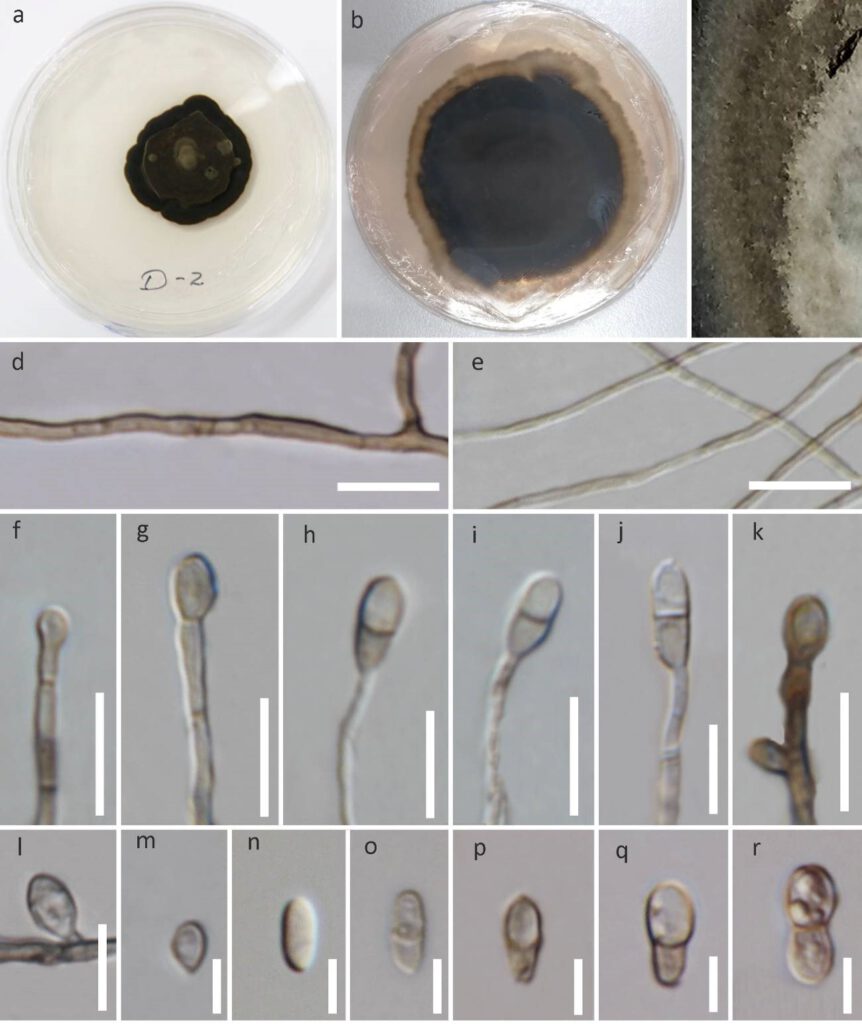Verruconis soli Yasanthika & K.D. Hyde, sp. nov.
MycoBank number: MB; Index Fungorum number: IF, Facesoffungi number: FoF 12888 Figure 5
Etymology – The specific epithet “soli” , from Latin, refers to soil, where the holotype was collected. Holotype –***
Asexual morph: Conidiophores 20–62 × 1–3.5 µm (x̅ = 39 × 2 μm, n = 20), micronematous, mononematous, solitary, unbranched, cylindrical to sub-cylindrical, straight to slightly flexuous, hyaline to brown, smooth. Conidiogenesis cells holoblastic, determinate, rarely intercalary Conidia 5–11 × 3–4.5 µm (x̅ = 8 × 3.5 μm, n = 20), hyaline, obovoid, smooth becoming sub-cylindrical or ellipsoidal, slightly verruculose thick and sometimes pale brown, 1-septate and constricted at the septum at maturity. Sexual morph: Undetermined.
Culture characteristics: Colonies on PDA at 25 °C after 7 days become 3.5 cm diam., irregular margined, velvety, dark brown, raised, grayish brown at center, reverse dark brown. Mycelium hyaline, become pale brown to brown at mature, 1–3 µm (x̅ = 1.5 µm) smooth to verruculose, septate.
Material examined: Thailand, Chiang Rai (20°4’35″N,100°5’43″E), 450m, on forest soil, 7 January 2020, E. Yasanthika (MFLU**, holotype); ex-type living culture MFLUCC 22-0082 and MFLUCC**); (MFLU ***, paratype), ex-paratype living culture MFLUCC 22-0090.
GenBank Accession No –

Figure 5 Verruconis soli (D2) (MFLUCC 22-0082, holotype) a Colony from above (on PDA). b Colony from below (on PDA). c Sporulated colony. d. Melanized hyphae. e Hyaline hyphae f–l Conidiogenesis. m–r Conidia. Scale bars: e = 15 μm, d, f–k = 10 μm, l–r = 5 μm.
